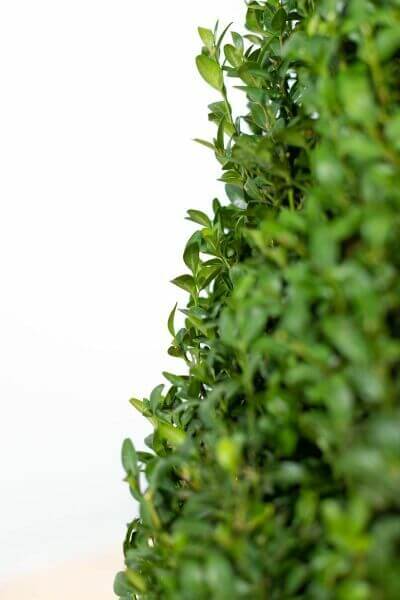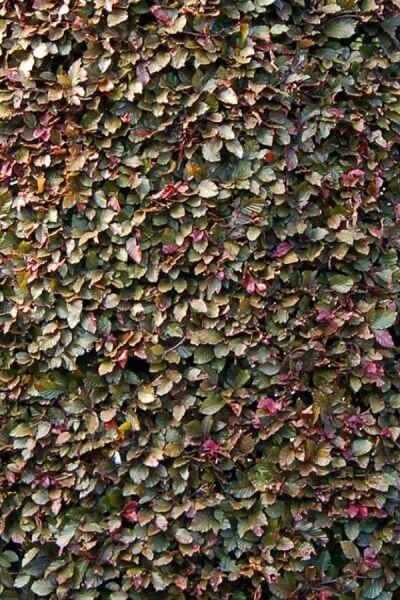Choosing The Right Hedging Plants
Choosing The Right Hedging Plants
Blog Article
Best Hedging Plants For Decorative Hedges
Boost your garden's attraction with rich hedge varieties such as Yew (Taxus), Thuja, Laurel, Photinia, and Bamboo, celebrated for their structural stability and environmental advantages.
Yew and Thuja provide evergreen coverage and winter season resilience, while Laurel provides quick growth and broad, aromatic leaves.
Photinia adds seasonal beauty with its vibrant red foliage, and Bamboo provides a low-maintenance, tranquil ambiance.
These hedges enhance air quality, lower noise, and produce tranquil, personal areas.
Appropriate planting, spacing, and maintenance guarantee energetic growth and environmental consistency.
Explore how these lush ranges can raise your garden's appeal and well-being.
Secret Takeaways
Change Your Garden With Lush Hedge Varieties
- Select Yew for its dense, evergreen growth and exceptional longevity.
- Select Laurel for its quick growth and broad leaves, ensuring fast privacy.
- Choose Photinia for its dynamic seasonal foliage, which turns a striking dark red.
- Use Bamboo for a low-maintenance, winter-hardy hedge with visual appeal.
- Area plants 2-3 per meter and prune frequently for optimal growth and health.
Popular Hedge Plants
When transforming a garden with lush hedge varieties, it's necessary to consider popular hedge plants such as Yew, Thuja, Laurel, and Photinia due to their unique qualities and benefits.
Yew (Taxus) is extremely esteemed for its longevity and dense, green development, making it a prime option for withstanding landscapes.
Thuja is noted for its evergreen foliage and robust winter season durability.
Photinia includes seasonal vibrancy with red leaves that darken with time, developing vibrant visual appeal.
Laurel provides quick development and aromatic, broad leaves, perfect for fast personal privacy.
Furthermore, Bamboo is an exceptional option for ambiance, offering a low-maintenance, winter-hardy option that boosts the garden's visual with its stylish, swaying walking sticks.
These selections cater to a range of horticultural requirements and preferences.
Benefits of Garden Hedges
Garden hedges use a multitude of advantages, making them an important addition to any landscape. These natural barriers are cost-efficient to execute and provide substantial wind security, improving air circulation and adding to sound decrease. The dense foliage of hedges like Thuja and Beech makes sure privacy by blocking exposure, creating a remote and serene environment.
Hedges likewise play an important role in microclimate policy, supplying a steady environment that fosters plant development and reduces temperature level changes. Their intricate leaf structures filter contaminants, improving air quality and contributing to a much healthier garden ecosystem.
Additionally, hedges excel in sound reduction, taking in and deflecting acoustic waves to lower ambient noise levels. This double functionality of supplying both visual and acoustic personal privacy boosts the overall harmony and aesthetic appeal of any garden.
Planting and Upkeep Tips
For a successful hedge, meticulous preparation of the planting location is vital. Make sure the soil has appropriate pH and drain to support strong root development.
Space the plants appropriately for the chosen species. Water the hedge regularly during its initial growth stage, changing as needed with seasonal changes.
Implement a systematic bug control and illness avoidance technique, using chemical or natural treatments when needed. Routinely inspect for aphids, termites, and fungal infections.
Apply mulch to keep moisture and reduce weeds. Seasonal pruning promotes dense growth and air blood circulation, important for plant health.
Following these guidelines will assist you cultivate a dynamic, properly maintained hedge that boosts the charm of your garden.
Spacing and Trimming Standards
Spacing and Trimming Standards
Appropriate spacing and cutting are important for cultivating healthy, visually appealing hedges. Sufficient spacing ensures each plant receives enough nutrients, light, and airflow.
Follow these standards for optimal hedge upkeep:
- Spacing: Position hedge plants 2-3 plants per meter to encourage robust growth.
- Pruning Strategies: Regular pruning is necessary for preserving wanted hedge height and shape. Trim new development in summer and cut down older wood during winter.
- Seasonal Care: Change cutting schedules and techniques according to seasonal requirements to make sure plant health.
- Hedge Height: Regularly screen and cut to keep the desired hedge height and accomplish consistent looks.
Complying with these steps will ensure your hedge flourishes, boosting both the appeal and performance of your garden.
Picking the Right Hedge
Choosing the Right Hedge
Choosing the proper hedge involves evaluating elements such as mature height, foliage density, and ecological durability. Successful hedge plant choice requires comprehending each types' development attributes and site-specific flexibility.
For example, Yew (Taxus) uses exceptional durability and thick development, while Thuja is significant for its winter season strength. Furthermore, considering upkeep requirements is vital; fast-growing types like Laurel or Privet need regular trimming, whereas low-maintenance options like Bamboo or Ivy may be more effective for those looking for very little upkeep.
Environmental factors such as soil type, light availability, and moisture conditions should likewise direct the selection procedure. This cautious approach guarantees the selected hedges will thrive, providing both practical and visual benefits to the garden landscape.
Shipment and Planting Guidance
To guarantee your hedge plants flourish, they need to be delivered by specialized couriers and planted promptly upon arrival.
Follow these important actions for effective planting:
- Soil Preparation: Enrich the soil with raw material to enhance drain and nutrient content.
- Planting Depth: Produce a trench two times the width and equivalent to the depth of the root ball.
- Watering Strategies: Water thoroughly after planting, keeping the soil consistently wet however not saturated.
- Mulching: Use a layer of mulch to keep wetness and suppress weeds.
Client Assistance and Service
Provided the crucial role of timely support in horticultural pursuits, our client assistance group is readily available 6 days a week through telephone, e-mail, and social media to use expert suggestions and promptly address any concerns. Their devotion to fast action times makes sure consumer satisfaction by dealing with queries associated with plant health, ideal planting techniques, and maintenance schedules.

Reaction Time
-------------------
Within 24 hours
This extensive support group, enhanced by a stellar 9.3/ 10 customer rating, highlights our commitment to improving the gardening experience for each client.
Often Asked Concerns
How Long Does It Take for Hedge Plants to Establish?
Hedge plants usually need one to three years to end up being completely developed, with the specific duration differing by types and growing conditions.
Reliable care during this critical duration is essential for robust development. Consistent watering, watchful weed control, and appropriate fertilizer application are pivotal in promoting strong root development.
For example, fast-growing types like Laurel may develop quicker, while slower-growing ranges such as Yew might take longer. Thorough maintenance accelerates the facility procedure, resulting in healthy and thick hedges.
What Are the very best Hedge Plants for Privacy?
The concern of the finest hedge plants for privacy includes examining evergreen and deciduous choices.
Evergreen hedges like Thuja, Laurel, and Cypress provide year-round coverage, making sure continuous privacy.
In contrast, deciduous hedges such as Beech provide seasonal personal privacy, shedding leaves in cooler months.
Secret upkeep tips for privacy hedges include regular trimming, fertilizing in spring, and appropriate spacing-- normally 2 to 3 plants per meter.
Additionally, consistent watering and diligent weed removal are essential for promoting healthy, dense growth.
Can Hedge Plants Attract Wildlife to My Garden?
Yes, hedge plants can draw in wildlife to your garden by offering vital benefits like shelter, food, and nesting sites, thus improving local biodiversity. Yew, holly, and laurel are outstanding for drawing in birds, while ivy supports a variety of pests.
Nevertheless, it is essential to note that there are some drawbacks, such as increased maintenance to handle insects and regular maintenance. Thoroughly choosing and maintaining hedge ranges can assist balance these benefits and downsides, eventually promoting a vibrant and sustainable community in your garden.
Are There Any Blooming Hedge Plants Available?
Yes, there are flowering hedge plants offered that can boost the appeal of your garden.
For instance, Elaeagnus, also called Olive Willow, produces fragrant white flowers in the fall, adding a touch of sophistication.
Photinia, another popular choice, showcases vibrant red leaves that develop into an abundant green, creating a vibrant visual effect throughout the seasons.
To guarantee these plants grow, it's important to practice correct pruning techniques and seasonal maintenance, such as trimming new growth in the summer season and cutting down in the winter.
These measures will help preserve the health and visual appeal of your blooming hedges.
How Do I Avoid Bugs in My Hedge Plants?
To avoid bugs in hedge plants, use natural insect control methods and preserve appropriate hedge care. Present helpful pests like ladybugs, which victimize damaging bugs, to develop a well balanced ecosystem.
Regularly inspect your hedges for indications of infestation and immediately eliminate any affected parts to prevent the spread. Ensure the health of your hedges by applying well balanced fertilizers and supplying adequate water.
Make use of mulching to maintain soil wetness and appropriate spacing to decrease plant tension and promote robust development. These practices collectively help in reducing pest issues and keeping a healthy hedge.
Conclusion
In essence, picking the best hedge varieties such as Yew, Thuja, and Laurel can transform any garden into a serene sanctuary. These plants offer year-round greenery, boost visual appeal, and deal practical advantages like sound reduction and wind defense.
Correct planting methods, accurate spacing, constant watering, and seasonal trimming are essential for optimum growth.
Reputable delivery services and skilled customer assistance ensure a smooth experience from purchase to planting, making it simpler than ever to raise your outdoor space.
Garden hedges use a plethora of benefits, making them an important addition to any landscape. These natural barriers are economical to implement and supply significant Browse around this site wind protection, boosting air flow and contributing to sound decrease. The dense foliage of hedges like Thuja and Beech makes sure privacy by blocking visibility, developing a secluded and peaceful environment.

Pruning Methods: Regular pruning is essential for keeping preferred hedge height and shape. Trim brand-new growth in summer and cut back older wood throughout winter.
Report this page